ART CITIES: Brussels-Ed & Nancy Kienholz
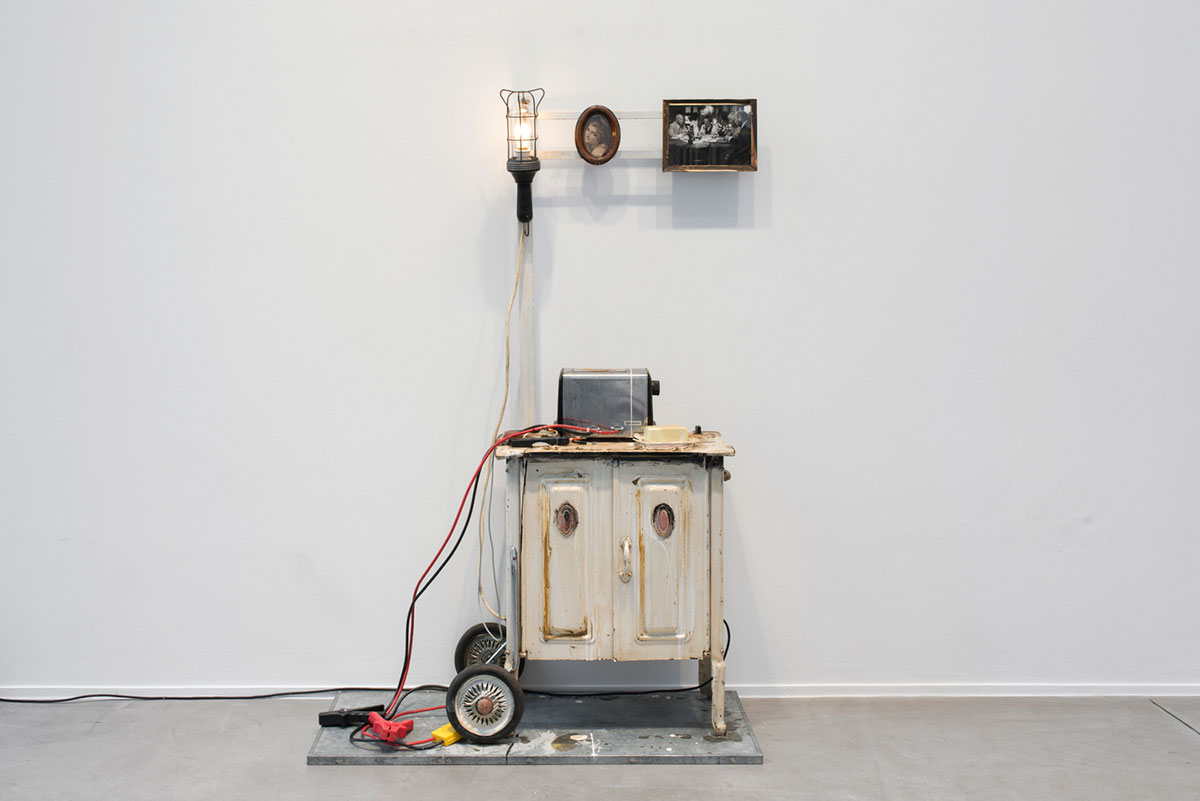 Edward Kienholz created powerful work that reflected upon contemporary social and political issues of late 20th Century America. He created life-size three-dimensional tableaux and immersive environments, composed out of the discarded detritus he found at yard sales and flea markets. From 1972 onward, he worked almost exclusively with his fifth wife, the artist Nancy Reddin Kienholz, who played a significant role in the conceptualization and fabrication of their later works.
Edward Kienholz created powerful work that reflected upon contemporary social and political issues of late 20th Century America. He created life-size three-dimensional tableaux and immersive environments, composed out of the discarded detritus he found at yard sales and flea markets. From 1972 onward, he worked almost exclusively with his fifth wife, the artist Nancy Reddin Kienholz, who played a significant role in the conceptualization and fabrication of their later works.
By Dimitris Lempesis
Photo: Galerie Templon Archive
For the first time works by of Ed & Nancy Kienholz are shown in Brussels. The show offers a spectacular presentation of a series of installations produced between 1978 and 1994. Blurring the codes of sculpture, the pieces operate as three-dimensional tableaux made of assemblages of artefacts, plunging the viewer into the heart of a disturbing universe, both fascinating and repellent. The jointly produced works express fierce, engaged criticism of the dysfunctionalities of American society: unbridled consumerism, everyday racism, sexism, structural violence and religious hypocrisy. The exhibition opens with “The Pool Hall” (1983) and “The Rhinestone Beaver Peep Show: (1978), two major works examining the exploitation of women and commodification of the body. In an America traumatised by the military interventions in Korea and Vietnam, they mount an equally ferocious attack on the use of young men as cannon fodder in “The Grey Man’s Parade”. No topic is taboo. With “Useful Art no. 2 (cabinet & toaster)”, an old-fashioned cooking stove, dusty and frozen in time, they are denouncing the ideal of consumerism in an America mired in capitalism. And they use the “J.C.” series, mysterious, makeshift crucifixes, to condemn the blind religious devotion that marks a jaded society. Although the Kienholz’s work unveils a pitiless vision of a disillusioned nation, a vision that very much goes against the grain, behind the muffled rage the door is left open to a more subtle and elusive interpretation: Kienholz made no attempt to sublimate the meanness and tragedy of life, its conditions of loneliness and triviality, but used them as a way of putting a shine on a low and popular universe, in which the wasted and the dirty, the depraved and the filthy represented a new and surprising beauty.
After earning his high school degree, Ed Kienholz pursued undergraduate studies at the nearby Eastern Washington College of Education and briefly attended Whitworth College in Spokane. As a young adult, Kienholz made a living working various odd jobs. After dropping out of college, he continued to live in Washington and was diversely employed as a care aide in a psychiatric hospital, a manager of a dance band, a used car dealer, a caterer, a decorator, and a handyman. In 1953 Kienholz moved to Los Angeles and began to develop his interest in art, transitioning from his initial fascination with painting to woodwork, which resulted in his first large-scale wooden relief in 1954. His first one-person exhibition took place at Los Angeles’s Vons Café Galleria in 1955, followed by a solo show at the Coronet Louvre Theater later that year. Just after his arrival in California, Kienholz quickly became embedded in the burgeoning Los Angeles art scene, acting not only as a prominent visual artist but also as an art dealer, gallerist, and curator. In August 1956, he founded the short-lived NOW Gallery in the Turnabout Theater, where he organized exhibitions of work by local artists. In 1957 he cofounded the Ferus Gallery with curator Walter Hopps. According to their official contract, written out on a hotdog wrapper, Hopps selected the gallery’s artists while Kienholz oversaw the space’s day-to-day management. The artist and poet Robert Alexander was also a central, although unofficial, collaborator in the gallery’s programming and administration. From its founding in 1957 through its closing in 1966, Ferus held a reputation for showcasing new and provocative art. It attracted a diverse following from various facets of the Californian avant-garde, acquiring a reputation as a gathering place for Beat poets and emerging artists including Richard Diebenkorn and Ed Ruscha. Two artists whose ideas and whose work in assemblages had a particularly strong influence on Kienholz were Bruce Conner and Wallace Berman. In 1957, Ferus was raided and temporarily shut down by the Los Angeles Police Department due to the “obscene” content of an exhibition of Conner’s art. Kienholz left his post at Ferus in 1958 to devote his attention to his artistic practice and was succeeded by the important Pop art dealer Irving Blum (under whose stewardship Andy Warhol’s soup-can paintings were publicly exhibited at Ferus for the very first time in 1962). Kienholz would continue to participate in Ferus’s events, showing his work on several occasions before it closed down in 1966.
In the early 1960s Kienholz moved from his practice of creating wooden reliefs to constructing the large-scale assemblage-based sculptures for which he is best known. These installations, or tableaux, were immersive, stage-like environments including life-size figures, found objects like furniture and household appliances, taxidermied animals, and other everyday objects that he had salvaged and repurposed for his art. His pioneering approach to assemblage garnered him a reputation as key practitioner of Funk art, a style prevalent among a loosely knit group of artists working in San Francisco and other areas of California. As Kienholz gradually rose to fame, his work acquired a reputation for its overt politics: it addressed such taboo topics as abortion, racism, hate crimes, prostitution, and casual sex. This subject matter, rendered in an often grotesque and unsettling style, prompted some critics to denounce his work as obscene. While his work was strongly critical of contemporary issues relating to the era’s Civil, Women’s, and Gay Rights movements, it was also deeply rooted in his personal experience; Kienholz’s sculptures and installations frequently documented actual locales, scenes, or individuals that he had encountered throughout his life. Kienholz continued to live in Los Angeles until the mid-1960s, while his reputation as a prominent fixture of the local art scene grew. He had his first solo museum exhibition in 1961 at the Pasadena Art Museum and was included in the Museum of Modern Art’s group show “The Art of Assemblage” that same year. In 1962 Kienholz joined the Dwan Gallery, and art dealer Victoria Dwan introduced him to such European artists as Arman, Jean Tinguely, and Yves Klein. These seminal figures of postwar European art would have a profound influence on Kienholz’s work in the years to come.
In 1966 Kienholz was selected to have a solo show at the Los Angeles County Museum of Art, which included his now notorious sculpture “Back Seat Dodge ’38” (1964). After the exhibition opened, the Los Angeles County Board of Supervisors attempted to close the show, claiming that the sculpture, which depicts a youthful sexual encounter in the back seat of an automobile, was “blasphemous” and “pornographic.” Despite these claims and the Board’s threats to withdraw museum funding, the exhibition went on, contingent on the grounds that a guard would watch over the sculpture at all times, keeping the car door closed and the tryst out of clear view, unless an adult requested that the door be opened. In the 1960s he was married to Lyn Kienholz, who had worked at Ferus Gallery in the early 1960s and became an important figure of the Los Angeles scene. In 1972 Kienholz met the photojournalist and self-taught artist Nancy Reddin at a party her parents were hosting for the writer Irving Stone. Although Kienholz was still married to Lyn, he and Reddin soon became inseparable and began a powerful romantic and artistic partnership, which resulted in Kienholz’s divorce from Lyn and marriage to Reddin the following year.
The couple worked on their first collaborative artwork, “The Middle Islands No. 1” (1972), and would go on to create installations and tableaux together until Kienholz’s death in the mid-1990s. In 1981, Kienholz retroactively asserted that all of his artistic output after 1972 should be attributed to both himself and his wife, noting that they should be referred to simply as “Kienholz”. While Reddin Kienholz had received no formal artistic training, she was a significant collaborator in both the conceptualization and realization of the duo’s prolific work. In 1973 Kienholz was awarded a grant by the German Academic Exchange Service (DAAD) to live and work in the Federal Republic of Germany. The Kienholzes sold their house in Los Angeles and moved to Berlin with their children, including Kienholz’s son Noah and daughter Jenny from his third marriage and Reddin Kienholz’s daughter Christine, whom Kienholz would later adopt. While the grant lasted for only one year, the artists continued to live with their family in Berlin part-time, maintaining a studio there and traveling between Germany and the United States until the 1990s. Deeply influenced by the tumultuous postwar environment of the fractured German Republic, the Kienholzes’ work began to deal with fraught political themes of war, fascism, and oppression during this era. The artists’ popularity and stature continued to grow throughout Europe, due to several significant exhibitions. In the early 1990s the couple and their children left Berlin for good and settled down in their on-again, off-again home in bucolic Hope, Idaho. During his later years, Kienholz began to suffer the detrimental effects of his chronic smoking and diabetes. As a result of his deteriorating health, he passed away suddenly from a massive heart attack on June 10/6/1994.
Photo: Ed & Nancy Keinholz, Useful Art No. 2 (cabinet & toaster), 1992, Mixed media assemblage, 157,5 × 106,7 × 45,7 cm, 62 × 42 × 18 in., Courtesy Galerie Templon
Info: Galerie Templon, Veydtstraat 13A, Brussels, Belgium. Duration: 13/1-26/2/2022, Days & Hours: Tue-Sat 11:00-18:00, www.templon.com

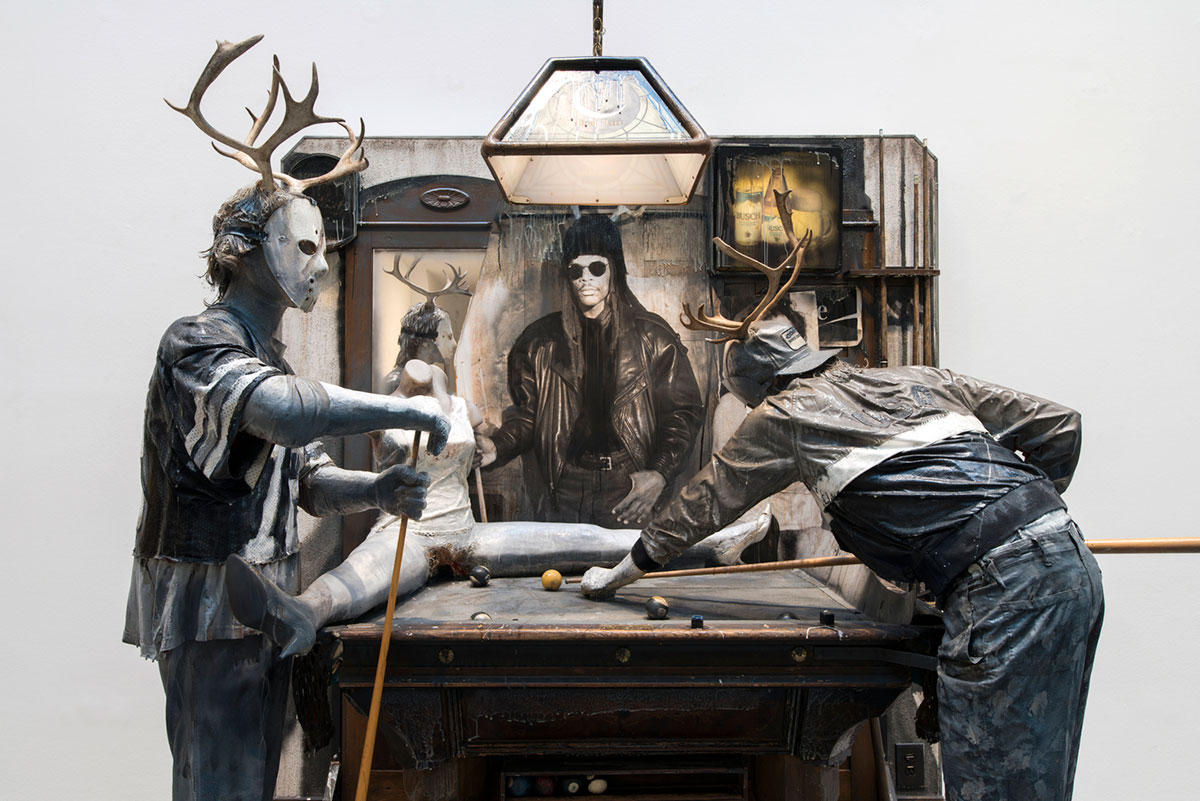
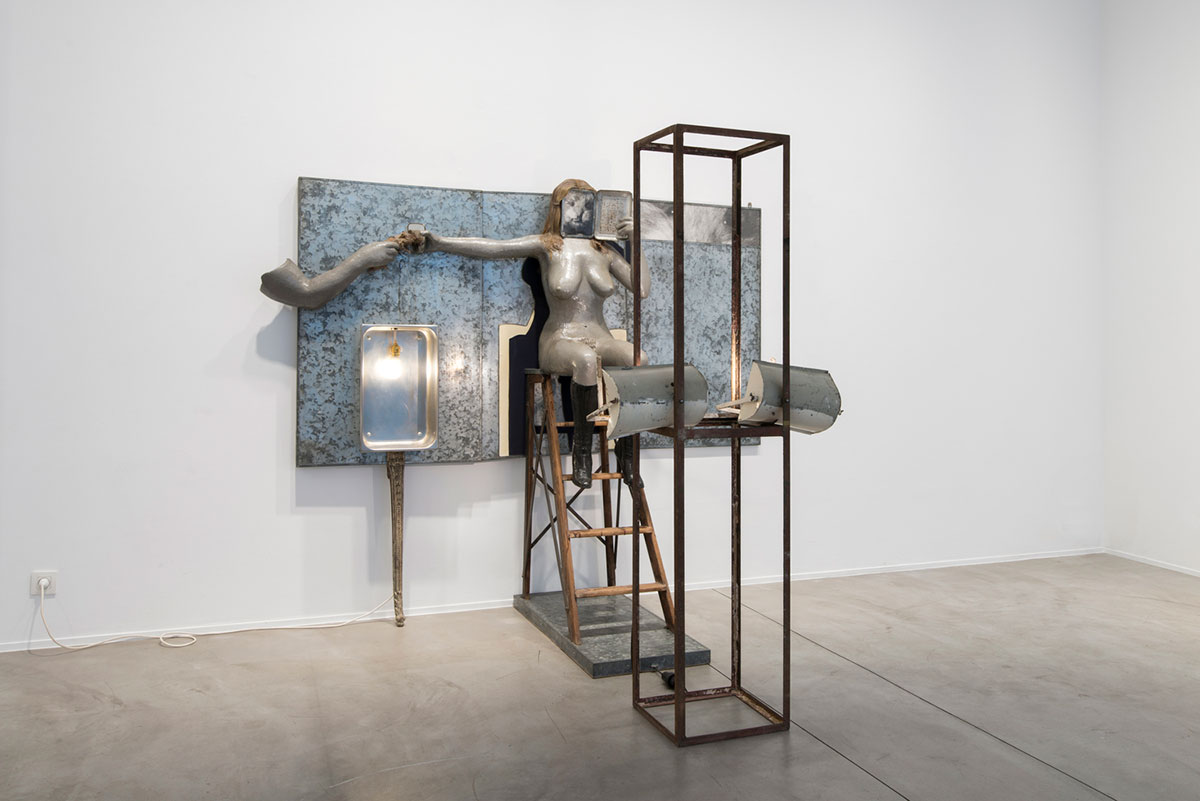
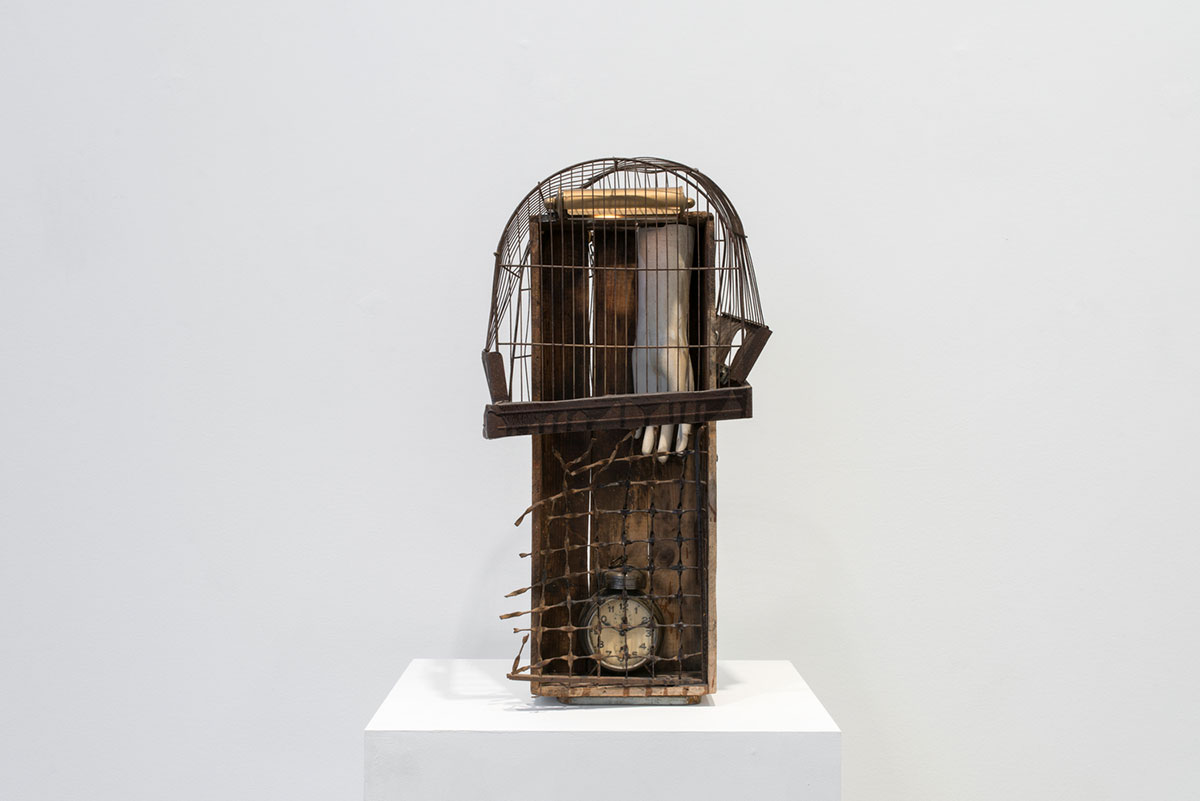
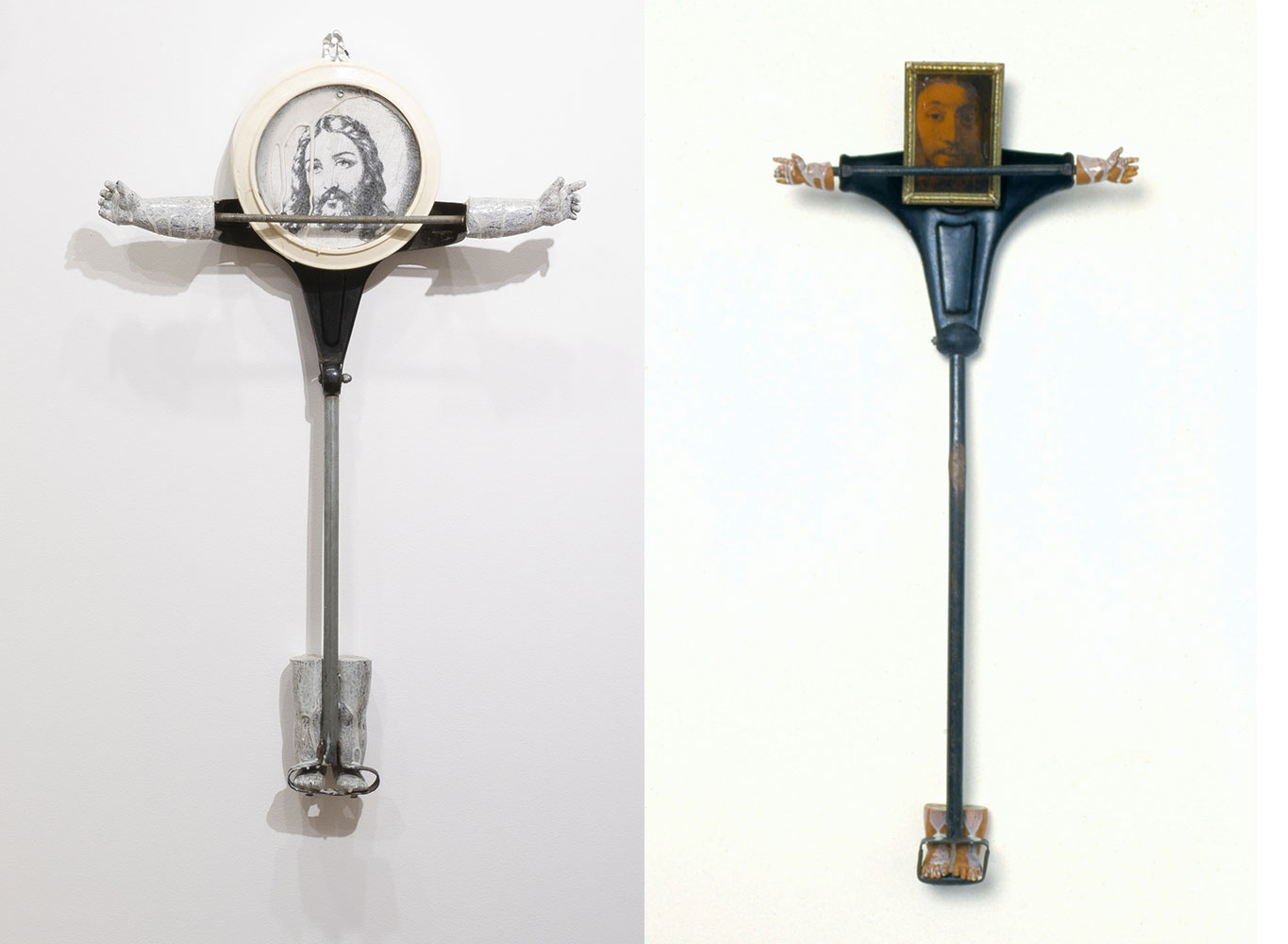
Right: Ed & Nancy Keinholz, J.C. #24, 1994, Mixed media assemblage, 105,4 × 47 × 9,5 cm, 41 1/2 × 18 1/2 × 3 6/8 in., Courtesy Galerie Templon
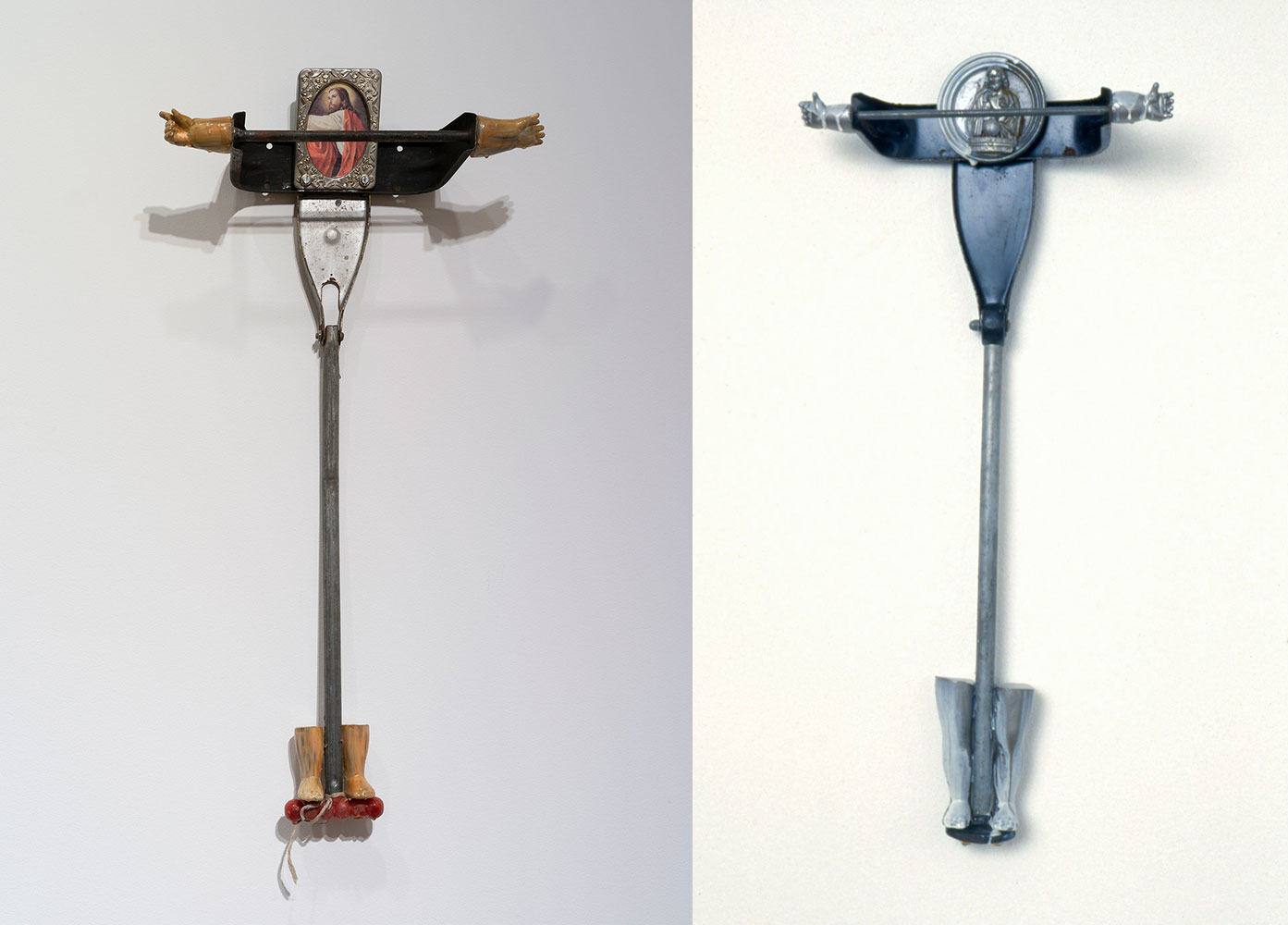
Right: Ed & Nancy Keinholz, J.C. #63, 1994, Mixed media assemblage, 66,7 × 29,8 × 11,4 cm, 26 1/4 × 11 3/4 × 4 1/2 in., Courtesy Galerie Templon
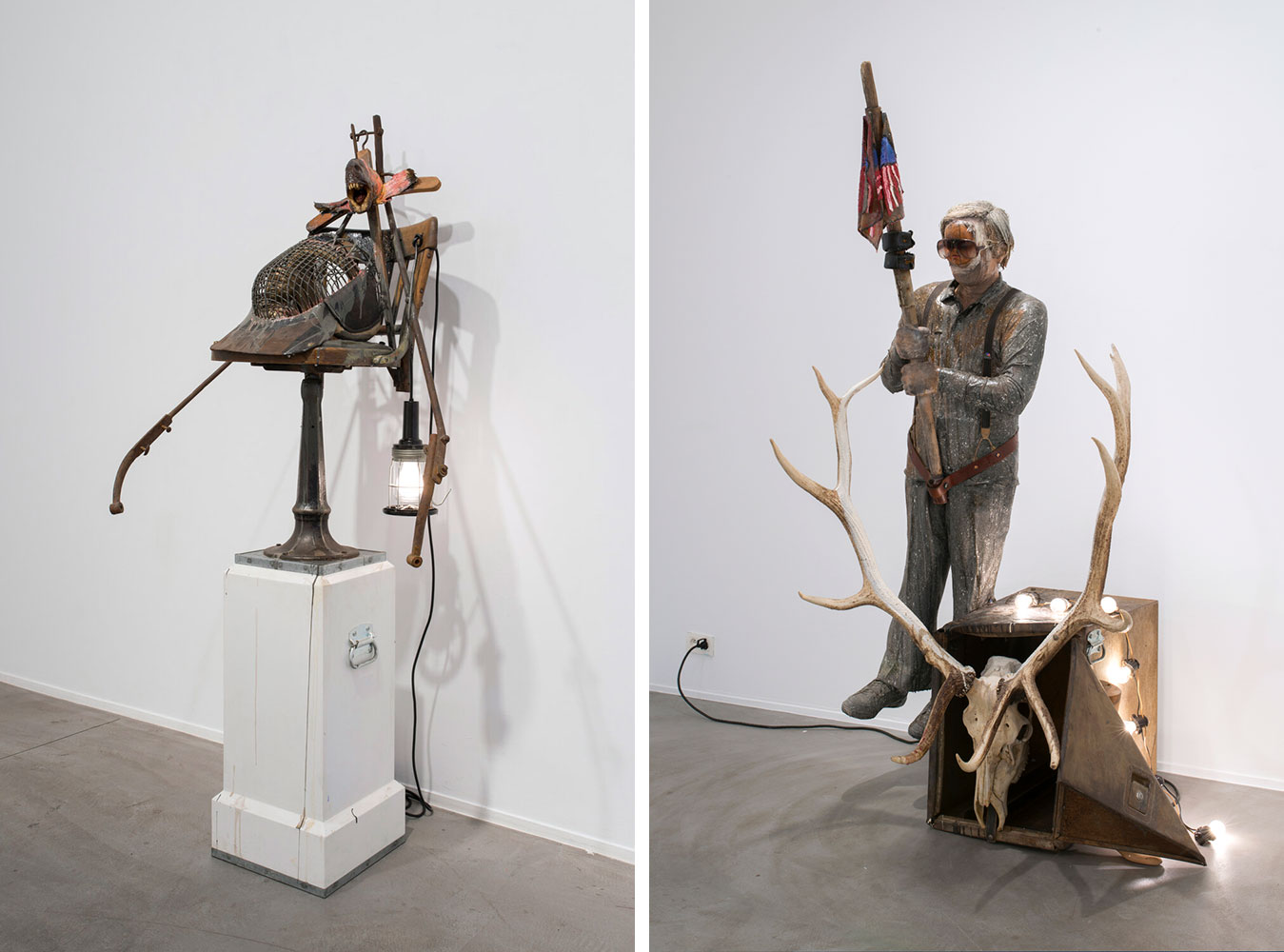
Right: Ed & Nancy Keinholz, The Grey Man’s Parade, 1987, Mixed media assemblage, 219,7 × 132,1 × 101,6 cm, 86 1/2 × 52 × 40 in., Courtesy Galerie Templon
